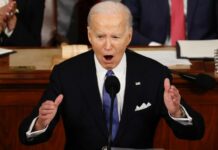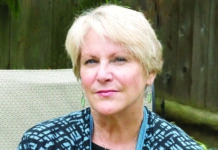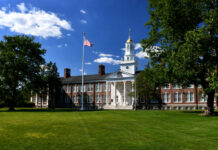
There is a key difference between International Holocaust Remembrance Day, declared by the United Nations and taking place each January, and Yom HaShoah, established by Israel and recognized every spring.
The former remembers the 6 million Jewish victims of the Holocaust and the liberation of Auschwitz on Jan. 27, 1945. The latter has a full name of Yom HaZikaron laShoah ve-laG’vurah, which means the day of remembrance of the Holocaust and the bravery.
That last part is crucial. Yom HaShoah, declared by the modern symbol of Jewish strength, the state of Israel, is about resistance as much as remembrance. It is aligned with the Warsaw Ghetto Uprising, the biggest act of Jewish resistance during the Holocaust, for a reason.
Jews were victims in that period, ultimately liberated by the United States and its Allies. But they did not just take Nazi oppression lying down. Both lessons are important, according to Jason Holtzman, the director of the Jewish Community Relations Council in Philadelphia.
That’s why, on April 16, JCRC, an agency within the Jewish Federation of Greater Philadelphia, will host a Yom HaShoah event that marks the 80th anniversary of the Warsaw Ghetto Uprising. The commemoration is open to the public starting at 1:30 p.m. at the Horwitz-Wasserman Holocaust Memorial Plaza on 16th Street and the Benjamin Franklin Parkway. It will include a candle lighting, music, prayer and remarks by Jewish Pennsylvania Gov. Josh Shapiro, among others.
The Warsaw Ghetto Uprising was a response to the Nazi effort to deport Jews to the Majdanek and Treblinka death camps. Jews used Molotov cocktails and hand grenades to ambush Nazi officers and soldiers. In the end, SS commander Jurgen Stroop ordered the burning of the ghetto, killing 13,000 Jews. Stroop later estimated that only 17 Nazis died in the fighting. But the Jews knew what the result would be. The point was to fight.
“It wasn’t like all Jews just went down like sheep getting slaughtered,” Holtzman said. “The Warsaw Ghetto Uprising represents the first instance of fighting back and the largest instance of fighting back.”
That is important to remember in a time of rising antisemitism, according to Holtzman.
“Right now, we’re seeing a major uptick in antisemitism and all forms of bigotry. It’s very uncomfortable,” he said. “It’s important to send a message that even during a time of the greatest hate against the Jewish people, some Jews found the strength to fight back against it.”
As Holtzman explained, Israel commemorates the moment when Jews fought back, while the U.N. remembers the day when the rest of the world liberated Auschwitz. He called those different interpretations “very interesting.” His grandfather was liberated from Auschwitz, so he sees both interpretations as important. But American Jews too often see it like the rest of the world and forget that their people fought back.
“I would consider those people to be heroes,” Holtzman said. “They were saying we’re going to go out standing up for our community.”
Zev Eleff, the president of Gratz College and a scholar of American Jewish history, said that, after the Holocaust, Americans were more likely to embrace the survivor narrative and discussion of the Shoah. Israelis preferred the resistance narrative. Many survivors who went to Israel even hid their numbers. That is why, in the United States, Yom HaShoah is often just called Yom HaShoah, with the descriptor of bravery taken off at the end of the name.
“Many Jews who do observe Yom HaShoah do so not fully aware of its association with the Warsaw Ghetto Uprising,” Eleff said.
But they must become aware, he added.
“What’s the reason to attach it? Agency,” Eleff concluded.
Rabbi Lance Sussman, also an American Jewish historian and the rabbi emeritus at Reform Congregation Keneseth Israel in Elkins Park, views resistance as a major part of Holocaust history in general.
“Going to your death with dignity is a form of resistance. But we tend to see them as passive martyrs. There are all types of forms of resistance,” he said.
Moving forward, Sussman would like to see Holocaust education emphasize resistance as much as remembrance.
“It’s a question of balance and as best as possible to see things comprehensively,” he said. “We need to teach it. We need to teach it in the Jewish community. And we need to push that in general society.” ■






